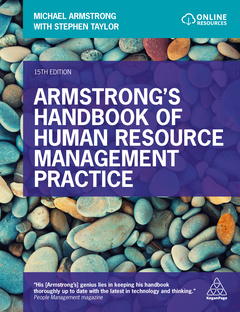Armstrong's Handbook of Human Resource Management Practice (15th Ed.)
Auteurs : Armstrong Michael, Taylor Stephen

Date de parution : 01-2020
Ouvrage de 800 p.
19x24.4 cm
Disponible chez l'éditeur (délai d'approvisionnement : 15 jours).
Prix indicatif 66,43 €
Ajouter au panierThèmes d’Armstrong's Handbook of Human Resource Management Practice :
Mots-clés :
hr textbook; hrm textbook; introduction to human resource management; employment law; employee relations; cipd textbook; hrm handbook; human resources; etext; hr professionals; hr field; e-text; hsbc; people-centered; toolkits; resourced; centric; credential; qualifications; cayman; euro; sigma; reorganized; pearson; drawbacks; workplace; employment; management; lean; managers and hr; manager; organizations; employees; successful managers; reference guide; required text; exercises and case; mate



